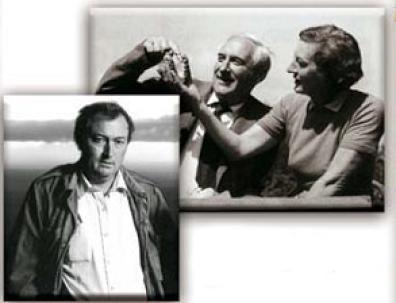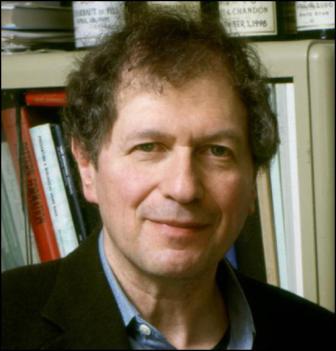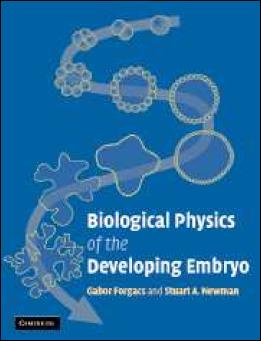Theory Of Form To Evolution Center Stage
Theory Of Form To Evolution Center Stage
By Suzan Mazur

Emperor Augustus' sacred eel pond
IT'S PRIVATE. That is now the word from organizers as to whether or not the public can listen-in to the conversation of 16 scientists meeting to remix the theory of evolution at Altenberg, Austria in July. So while Konrad Lorenz Institute where the symposium will take place may not exactly resemble the sacred pond of Emperor Augustus where priests read the entrails of eels and advised what was to befall Rome -- and evolutionary science is nowhere near as primitive -- there is still public concern about the emergence of evo high priests, as reflected in a substantial response to my recent series of evolution stories:
Evolutionary biologist, Massimo Pigliucci, a co-architect of the KLI "major event", emailed me saying "somebody could do a sociological study of science and fringe science just based on the developments from our interview."
As a rising star on the lecture circuit , Pigliucci knows there is much public interest in a new theory of evolution. Why then must the Altenberg proceedings remain closed?
Here’s my abstract:
The public says a reformulation of the theory of evolution is bigger than the Altenberg 16 -- no matter how brilliant the individuals may be. People think a remix of evolution is high priority and say they have a right to know, since scientists are publicly funded. They want open discussion and say such information should not be locked down for future book and lecture DVD sales. There is too much of that kind of industry already corrupting science.
Following is feedback on the evo stories linked above -- what developmental biologist Stuart Kauffman might consider part of the "ceaseless creativity" of the universe.
I was happy to see Richard Leakey’s web site pick up the Dawkins story. It was actually Richard Leakey, then director of the Nairobi museum, who secured the plane for my flight into Olduvai to talk with his mother, the late paleoanthropologist Mary Leakey.

(left to right) Richard, Louis and Mary Leakey - ( Image Source)
A few of the science sites that picked up the Altenberg story include:
- Genome Technology Online
- Geoscience Research Institute
- Nature Publishing Group
- Society of Systematic Biologists
The Altenberg articles have been discussed online in at least a half dozen languages:
And they've been posted to religious sites, such as the Harekrishnas and Church of Jesus Christ of Latter-Day Saints.
Intelligent Designers are apparently some of the most vigorous bloggers on evo, and Paul Nelson's column on the Altenberg story for Uncommon Descent generated 206 comments.
Democratic Underground, always a fierce political battleground, took up the debate, excerpting natural philosopher and zoologist Stan Salthe's comments regarding natural selection, i.e., "Summarizing we can see the import of Darwinian theory of evolution is just unexplainable caprice from top to bottom. What evolves is just what happened to happen."
Michael Purugganan, a professor of genomics and one of the A-16 scientists, emailed from his lab at NYU to say (in jest?) "I'll have appropriate buttons or pins made that say Altenberg 16 . . . . they will be distributed at the meeting."
And Yale professor of ecology and evolution Gunter Wagner, another of the A-16 – who I was unable to reach for comment for the original story – wrote "Hey that is great! This is one button I will keep!"
But there have been grumblings elsewhere in the scientific community about who was left out of the A-16 invite. The name most mentioned as crucial to a successful redo of evolutionary theory and missing from the A-16 list is that of Harvard evolutionary geneticist Richard Lewontin.
Lewontin told me he would not go, however. "No. No way." Aside from any personal objection to the content of the conference, there may be another reason Lewontin is not attending. According to one admirer, Lewontin doesn’t like to fly.
One of the other giants I interviewed for the first Altenberg piece – paleontologist Niles Eldredge, originator of the punctuated equilibrium theory with Steve Gould – was apparently also not invited. Eldredge told me he only "knows of" Massimo Pigliucci, and actually described himself as "a very conventional evolutionary biologist". "I disappoint people sometimes," he said.
Evolution's star public intellectual Richard Dawkins might have been too much of an anchor for the A-16 discussions. He wasn’t invited as he hinted during our recent Q&A at Barnes & Noble in Tribeca:
"You’ve been taken in by the rhetoric. . . . You asked the question: Have I been invited? I’m sorry to say I get invited to lots of things and I literally can’t remember whether I was invited to this particular one or not."But it’s being viewed as a "major event" I told him.
"By whom I wonder?", he jabbed.
There was a disgruntled posting by
"Jim C" from Melbourne on Dawkins.net
saying, "We may indeed know more
about the nature of DNA and the complex details of its
operations, but it is the height of intellectual arrogance
to describe the evolutionary theory moving away from a
"population genetic-centered view"."
With noticeable rivalry in the scientific community then, one of the qualifications for the A-16 no doubt must have been congeniality.
Massimo Pigliucci’s colleague from Stony Brook, evolutionary biologist Doug Futuyma, for instance, is not on the list either.
University of Torono biochemist Larry Moran, who runs a popular website called Sandwalk, which considers itself the rival to SEED blogger PZ Myers’ Pharyngula, asked me: "Why was Doug Futuyma not invited?"
Niles Eldredge shared the following with me about Futuyma's treatment of him and Steve Gould in his book:
"If you open Doug Futuyma’s book – the guy at Stony Brook who’s probably one of the most famous evolutionary biologists in the country now if for no other reason than he wrote that widely-read text book – you’re not going to find that Steve Gould and I get a very good shake in that book. And you’re not going to find I don’t think an extended discussion of self-organization, if it’s even mentioned."
Maybe Futuyma’s lack of interest in self-organization – a subject which will be explored at the A-16 meeting – kept him off the list.
That Lewontin, Eldredge, Dawkins and Futuyma will not be a part of the so-called "Extended Evolutionary Synthesis" discussion in Austria does diminish the event. But there’s plenty of fresh talent out there as well. And Massimo Pigliucci and Gerd Muller have presumably found some.
Stuart Newman, a professor of cell biology and anatomy at New York Medical College and board member of KLI, is presenting his theory of the origins of form at Altenberg -- the current Synthesis, remixed 70 years ago, has been without a theory of form. Newman says he doesn't know half the people who are going to be there and that scientists really need a forum in which to interact with like-minded scientists. Newman added, "These groups are kind of carefully chosen so as not to create fights".
The real disconcerting issue, though, is the public being shut out. The New York Times has now asked to attend after reading my Altenberg story. They too have been turned away. Not the first time the Times has noted my work, incidentally: "New York Times Fesses Up to Another Rip Off" [see… http://www.counterpunch.org/mazur11182004.html].
Larry Moran at Sandwalk agreed with my suggestion that the conference somehow be made public. Moran linked my posting of the A-16 invite , to which one reader (The Monkeyman) responded:
"It is a shame that this and other conferences that hold interest to many budding scientists who cannot get the money to attend. . . will not be streamed or recorded and put up for download."
Newman says "private" maybe evokes the wrong kind of image. He says he agrees that a lot of science is publicly funded and he does feel a responsibility to make his research accessible to the public. But he also thinks the event may not be designed for "prime time".
Says Newman, "If I were to take my undigested ideas and make them accessible to the public, I would lose my reputation very fast because I probably have a lot of stupid ideas also."
Gunter Wagner commented on Moran’s web site in response to the Altenberg piece, that he didn't like being lumped together with the likes of philosopher Jerry Fodor and Stuart Pivar.
Fodor wrote the now infamous "Why Pigs Don't Have Wings" story in the London Review of Books arguing that the central story of the theory of evolution is wrong in a way that can’t be repaired, which led to a fierce online exchange among leading evolutionary thinkers hosted by Stan Salthe.
Pivar is the independent scientist whose work has been skewered on the blogosphere for not being a complete theory of evolution.
But despite the controversy, look for more commentary from Jerry Fodor on evolution without adaptation. He's taken a year off from teaching as State of New Jersey philosopher at Rutgers University to write a book with Massimo Piatelli-Palmarini, a professor at the University of Arizona, who Fodor says is handling the biology. Fodor also says he has tenure and is not worried about fallout.
But Salthe also told me he doesn't like being lumped together with Fodor and Pivar, because he has published papers in the field. On the other hand, this doesn't seem to make a difference in his attempts to contact A-16's Gunter Wagner, who Salthe says won't respond. Salthe, says he thinks his view on natural selection makes him "poison".
Fodor says the careers of most evolutionary scientists are tied up with natural selection.
Pigliucci, defends the natural selection turf. He told me this:
"So to say that natural selection is out of the picture seems to me to discard literally thousands and thousands of empirical papers. And I don’t think anybody can afford to do that, let alone Fodor, who is apparently not familiar with that literature."
But Salthe says you can’t dismiss the censorship going on in the evo debate. He recently sent me his correspondence with the neo-Darwinian journal TREE (Trends in Ecology and Evolution) in which he asked them to publish his letter arguing to "save the phenomenon of convergent evolution even if it seems inconvenient" to the Darwinian perspective on organic evolution. Salthe was responding to an article TREE published suggesting the concept of convergent evolution be eliminated based on a totally genetic analysis. TREE refused to publish Salthe's letter.
Convergent evolution he says happens when different species become similar without involving "similar genetic representation". Examples of this he notes are old world vultures evolving from hawks and new world vultures evolving from storks. Here’s Salthe’s letter to TREE and their responses:
10 February 2008
Dr. Katia Bargum
Acting Editor
Trends in Ecology & EvolutionSir/Madam
In Volume 23, Number 1, there is an opinion paper by Arendt and Reznick that I think requires comment, in that it redefines Convergent Evolution out of existence. Would it be appropriate/acceptable to submit a short rejoinder of just a few paragraphs?
Stan Salthe
Biological Sciences
Binghamton University11 Feb. 2008
Dear Dr. Salthe,
Many thanks for your email. In the case of responses to published articles, we generally encourage authors to submit the letter they would be considering, or a summary of their argument. If you would like to send us such an outline, I would be glad to consider it further for publication.
Best regards
Katia[Salthe sent in his outline. See… Concerning A Proposed Deconstruction Of Convergent Evolution - S.N. Salthe, February, 2008.]
Tuesday, March 4, 2008
Dear Stanley,
Many thanks for providing an outline for your letter. However, I regret to say that we have already commissioned a letter presenting a very similar counter-argument to Arendt and Reznick, and this precludes one from commissioning another article on this point.
I am sorry to disappoint you. I intend no criticism of your work, and wish you the best of luck in publishing your letter elsewhere.
Very best wishes,
Katia
Salthe says the TREE people no doubt went to his web site and saw his critique of natural selection and reacted. "And that is it!" – he said. "You know, forget it! This guy is poison." He then wrote back to TREE saying: "I am glad you have found an appropriate author for this idea."
PZ Myers/Pharyngula, who Richard Dawkins quoted adoringly at Barnes & Noble last weekend, again trashed Stuart Pivar’s work in his blog after reading the Altenberg 16 story, but liked the fact that I’d interviewed Richard Lewontin.
Pivar says he has in fact taken the advice of NASA minerologist Robert Hazen and early on approached mainstream evo publishers. He has been repeatedly rejected he says, but continues to fight on, making the point that he's the only one with a model.
Pivar recently offered a research grant to Massimo Pigliucci and his lab to study his Engines of Evolution book, following an exchange of emails with Pigliucci over several months.
Pigliucci said he considered the gesture "bribery" and refused the offer, adding that he does not share Pivar's enthusiasm about his theory of form.
Richard Milner, Steve Gould’s former editor and author of Darwin’s Universe (forthcoming 2009), told me that Darwin, while terrified of controversy himself, was no shrinking violet in sending out his disciples, Thomas Huxley ("Darwin's bulldog"), et al., to proselytize for him. Milner said Darwin kept a list of those he converted to his theory and that Huxley was shut down by the police for holding meetings on Sundays where he’d present his science lectures as sermons, calling them "Lay Sermons".
I also received an email from a microbiologist named Anders in Denmark, who said Pivar’s was not sound science – which I passed on to Pivar to address. Pivar said he emailed Anders, who had not read his book, and told him he was sending him a copy for review.
Pivar says he welcomed a recent email with constructive comment from Stuart Newman on the subject of form.

Stuart Newman - (Image Source)
Newman told me this in a phone conversation about the theory of form he'll be presenting at the Altenberg meeting:
"The idea is that when multicellularity first emerged [a half billion years ago] the products of a number of genes that existed in single-celled organisms, and had evolved for single cell purposes, began to mobilize physical forces and physical processes that are characteristic of materials at a larger ('meso') scale. For instance, single-celled organisms or individual cells can secrete molecules, but it doesn't really have any consequence for the structure of the organism. But if it's in a multicellular context, then secreted molecules can form gradients that provide patterns. . . . It's a simple form of self-organization." This can help explain the burst of animal evolution that happened in the Cambrian explosion. Consider, in a more complex example, two very distinct physical processes that existed in the single-celled world, the production of secreted molecules and intracellular biochemical oscillations. When they found themselves together in a multicellular-scale structure, their combined effect was to make segmentation all-but-inevitable. In fact, we know that modern-day embryos, including those of humans, still use these ancient "generic" physical processes to form their segmented backbones.
" When multicellularity emerged, new physics was brought to bear on the formation of organisms. It's not that these physical processes didn't exist before multicellularity. They just didn't pertain to the development of organisms before. . . .
" At the point when the modern animal body plans first emerged [half a billion years ago] just about all of the genes that are used in modern organisms to make embryos were already there. They had evolved in the single-celled world but they weren't doing embryogenesis. What did it take to get them to do embryogenesis? It took a change in scale. What led that change in scale is that, possibly due to alterations in external conditions, cells became sticky. And once they became sticky, you had multicellular organisms, and mobilization of the self-organizing physical processes of mesoscale materials."


Newman also said people are working on pre-biotic evolution, but nobody would be presenting a paper on that subject at Altenberg in July.
Fast forwarding a half billion years, Newman's got a very interesting article in the March 2008 issue of Capitalism Nature Socialism, called "Evolution: The Public's Problem and the Scientists' " in which he observes that, "The nearly exclusive focus on genes to account for biological change at the levels of both individual development and large-scale evolution, like the cash nexus of market economies, collapses quality into quantity, life into symbol."
Speaking of symbols, Ben Stein's "Expelled" film people contacted me "to get involved" with the project after reading the Altenberg story. Curiously, they take a pro-war position, and I have not responded to them.
Sam Smith, the inimitable editor of Undernews, the online publication of Progressive Review, excerpted and linked the Altenberg story with pinups of the various evo thinkers not invited to the A-16 meeting (including the late Andy Warhol), plus that of Massimo Pigliucci. The Undernews comments were growing tense last time I looked.
Financial guru Catherine Austin Fitts, a former Assistant Secretary of Housing in the Bush I administration, included the A-16 invite story on her Solari.com "Top Picks" list.
Canada's Financial Post and National Post linked the Dawkins story.
New York's Daily News (cache link) posted the Altenberg piece.
And Fox Television News carried the A-16 story on Sean Hannity's forum.
So the public is craving evo enlightenment. But Massimo Pigliucci has said he will keep the lid on the Altenberg proceedings regardless and that he and his European co-organizer Gerd Muller will comment for the group only after returning home.
"You’re saying that you’re ruling out even a panel in Altenberg at the end of the conference?" – I asked Pigliucci.
"You mean on the order of: Doctor, how’s the patient doing?" – he responded. "No, the meeting is private."
 Suzan
Mazur says her interest in evolution began with a Cessna
single engine flight into Olduvai Gorge, across a closed
Kenyan-Tanzanian border, to interview the late
paleoanthropologist Mary Leakey. Their meeting followed
discovery of the 3.5 million year old hominid footprints by
Leakey and her team at Laetoli http://en.wikipedia.org/wiki/Laetoli. Mazur says
Leakey was the only reason the Tanzanian authorities agreed
to give landing clearance. Her reports have since appeared
in the Financial Times, The Economist, Forbes, Newsday,
Philadelphia Inquirer, Archaeology, Connoisseur, Omni and
others, as well as on PBS, CBC and MBC. She has been a guest
on McLaughlin, Charlie Rose and various Fox Television News
programs. Email: sznmzr@aol.com
Suzan
Mazur says her interest in evolution began with a Cessna
single engine flight into Olduvai Gorge, across a closed
Kenyan-Tanzanian border, to interview the late
paleoanthropologist Mary Leakey. Their meeting followed
discovery of the 3.5 million year old hominid footprints by
Leakey and her team at Laetoli http://en.wikipedia.org/wiki/Laetoli. Mazur says
Leakey was the only reason the Tanzanian authorities agreed
to give landing clearance. Her reports have since appeared
in the Financial Times, The Economist, Forbes, Newsday,
Philadelphia Inquirer, Archaeology, Connoisseur, Omni and
others, as well as on PBS, CBC and MBC. She has been a guest
on McLaughlin, Charlie Rose and various Fox Television News
programs. Email: sznmzr@aol.com
(NOTE: An earlier version of this article was published here.)


 Keith Rankin: Judaism, Antisemitism, And Israel
Keith Rankin: Judaism, Antisemitism, And Israel Ian Powell: Haka, Hikoi And The Empowerment Of The Kohanga Generation
Ian Powell: Haka, Hikoi And The Empowerment Of The Kohanga Generation Binoy Kampmark: Feeding Chaos - Israel Cripples Syria’s Defence
Binoy Kampmark: Feeding Chaos - Israel Cripples Syria’s Defence The Conversation: News Bargaining Incentive:
The Conversation: News Bargaining Incentive: Binoy Kampmark: Last Acts -Time For Biden To Pardon Assange
Binoy Kampmark: Last Acts -Time For Biden To Pardon Assange Binoy Kampmark: Foiling Rupert Murdoch - Project Harmony Misfires
Binoy Kampmark: Foiling Rupert Murdoch - Project Harmony Misfires